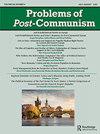顿巴斯冲突:俄罗斯的特洛伊木马如何失败并迫使莫斯科改变其战略
IF 2
2区 社会学
Q2 POLITICAL SCIENCE
引用次数: 5
摘要
摘要本文论述了俄罗斯应对顿巴斯冻结冲突的战略方法及其产生的两个事实上的国家,这与俄罗斯以前的做法不同。它认为,“特洛伊木马战略”是专门针对顿巴斯的,因为冲突的第二代性质是由莫斯科在与西方对抗中的利益驱动的。然而,当这一战略失败并造成僵局时,俄罗斯不得不对其进行调整。这导致莫斯科承认顿巴斯的两个人民共和国独立,随后彻底入侵乌克兰其他地区。本文章由计算机程序翻译,如有差异,请以英文原文为准。
Donbas Conflict: How Russia’s Trojan Horse Failed and Forced Moscow to Alter Its Strategy
ABSTRACT The article deals with Russia’s strategic approach to the frozen conflict in Donbas and the two de facto states it generated, which differs from Russia’s previous practices. It argues that the “Trojan Horse strategy” was tailored explicitly to Donbas due to the second-generation nature of the conflict which was driven by Moscow’s interests in the confrontation with the West. However, when the strategy failed and created a stalemate, Russia had to adjust it. This resulted in Moscow’s recognition of the two people’s republics in the Donbas as independent, followed by an outright invasion of the rest of Ukraine.
求助全文
通过发布文献求助,成功后即可免费获取论文全文。
去求助
来源期刊

Problems of Post-Communism
POLITICAL SCIENCE-
CiteScore
4.00
自引率
12.50%
发文量
33
期刊介绍:
The post-communist countries are the most rapidly changing societies of Europe and Asia. For insight into this twenty-first century revolution, there is no better source than Problems of Post-Communism. Emphasis is placed on timely research covering current economic, political, security, and international developments and trends in Russia and China, Central Europe and Central Asia, Latin America, and Southeast Asia. Clarity and readability make the articles fully accessible to researchers, policy makers, and students alike.
 求助内容:
求助内容: 应助结果提醒方式:
应助结果提醒方式:


